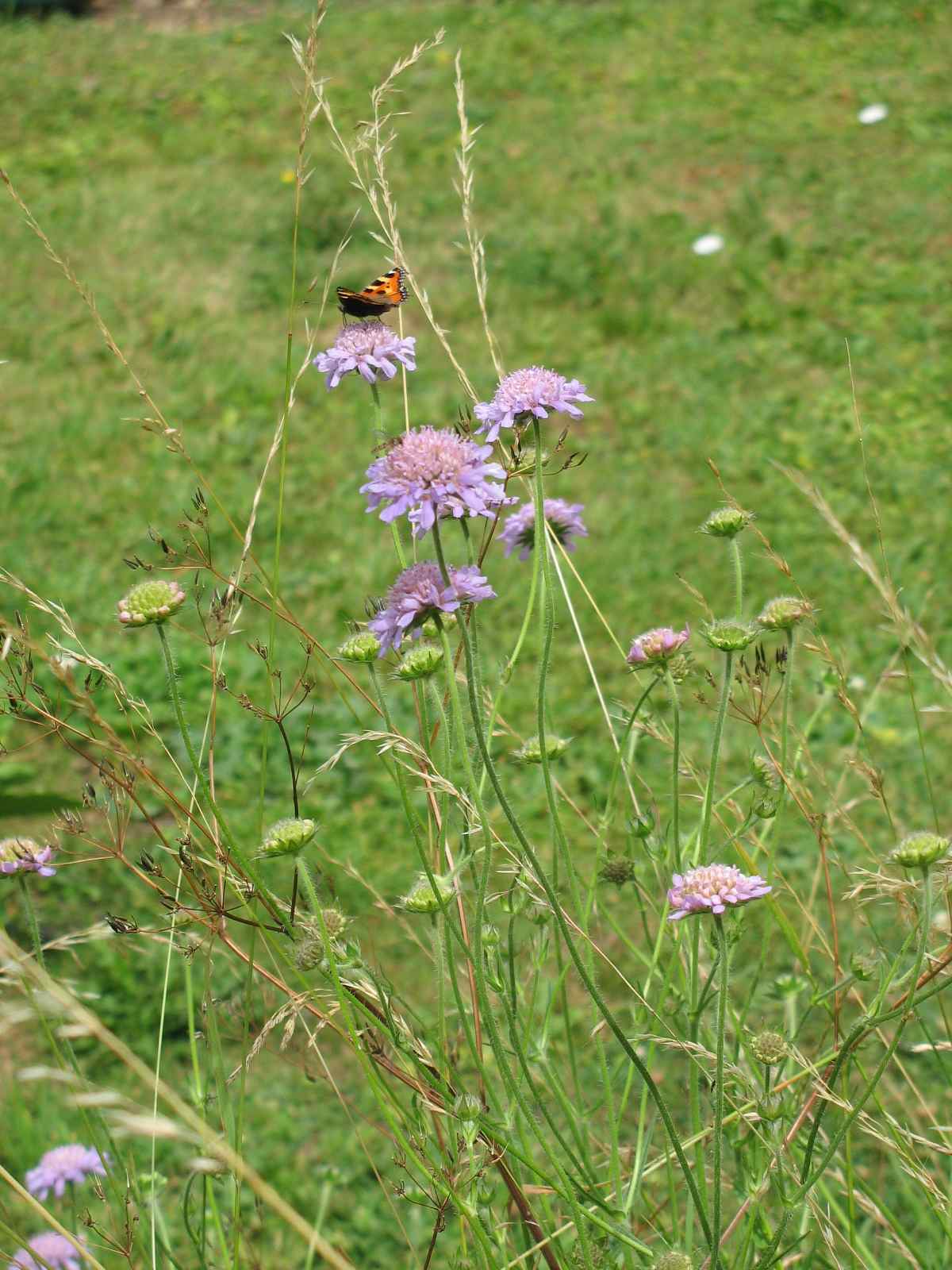July can be a difficult month for flowers. The autumn asters are not ready yet, and the June flowers are over; even the repeat-flowering climbing roses and the geraniums are taking a breather before flowering again. But I am gradually introducing more flowers for this time of year.
In the meadow the campion has finally stopped flowering, but the field scabious has taken over. It’s a lovely flower for butterflies and bees – one of those with many little flowers in a flowerhead. The knapweed is still flowering along with it. Among the butterflies there are gatekeepers, a meadow brown, large white and small tortoiseshell.
By the pond the anthemis tinctoria EC Buxton – a daisy-like flower, is still flowering, and the runner bean and courgette flowers also provide colour. Some new day lilies are flowering too – a pale yellow double is particularly nice.
In the front garden, the most popular flower for bees and butterflies is the marjoram. Thyme is also in flower – both of these, like the scabious, have many little flowerets for the insects to gain nectar from and to pollinate. The gatekeeper butterflies particularly like the marjoram and 10-12 can be seen at one time on the clump. Penstemons are now in flower – I have Purple Bedder and Garnet in the front garden however my favourite has vanished this year because of the cold winter: Sour Grapes. Bees will pollinate these, too.
I nearly forgot my beautiful big clumps of white Shasta daisies – leucanthums – they brighten my view from my study window. You can get them in ruffled petals and with white centres, too. They flower later than the wild oxeye daisy, to which they are related, and have sturdier stems.
Lastly, my opium poppies have finished flowering but I have left the seed pods to ripen both for future poppy plants and for the birds to eat. It is amazing to watch a blue tit clutch a stem in its claws while pecking a hole in the seedcase in order to get at the seeds!
